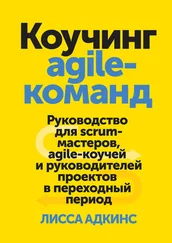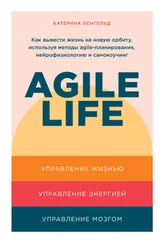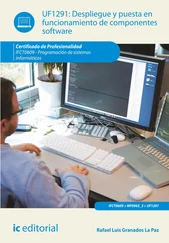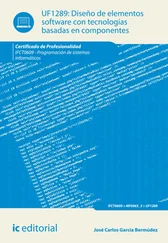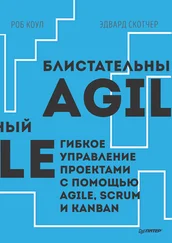But what is the role of "new" external ideas and experiences in design? How are tradition and transcendence united in a Wittgensteinian approach? It could, I believe, mean utilizing something like Berthold Brecht's theatrical "alienation" effect Verfremdungseffekt to highlight transcendental untried possibilities in the everyday practice by presenting a well-known practice in a new light: "the aspects of things that are most important to us are hidden because of their simplicity and familiarity" (Wittgenstein, 1953). However, as Peter Winch (1958, p. 119) put it, in a Wittgensteinian approach: "the only legitimate use of such a Verfremdungseffekt is to draw attention to the familiar and obvious, not to show that it is dispensable from our understanding."
Design artifacts, linguistic or not, may in a Wittgensteinian approach certainly be used to break down traditional understanding, but they must make sense in the users' ordinary language-games. If the design tools are effective, it is because they help users and designers to see new aspects of an already well-known practice, not because they convey such new ideas. It is I think fair to say that this focus on traditional skill in interplay with design skill may be a hindrance to really revolutionary designs. The development of radically new designs might require leveraging other skills and involving other potential users. Few designs, however, are really revolutionary, and for normal everyday design situations, the participation of traditionally skilled users is critical to the quality of the resulting product.
The tension between tradition and transcendence is fundamental to design. There can be a focus on tradition or transcendence in the systems being created. Should a word processor be designed as an extension of the traditional typewriter or as something totally new? Another dimension is professional competence: Should one design for the "old" skills of typographers or should new knowledge replace those skills in future use? Or again, with the division of labor and cooperation: Should the new design support the traditional organization in a composing room or suggest new ways of cooperation between typographers and journalists? There is also the tension between tradition and transcendence in the goods or services to be produced using the new system: Should the design support the traditional graphical production or completely new services, such as desktop publishing?
Tradition and transcendence, that is the dialectical foundation of design.
Design by Doing: New "Rules of the Game"
What do we as designers have to do to qualify as participants in the language-games of the users? What do users have to learn to qualify as participants in the language-game of design? And what means can we develop in design to facilitate these learning processes?
If designers and users share the same form of life, it should be possible to overcome the gap between the different language-games. It should, at least in principle, be possible to develop the practice of design to the point where there is enough family resemblance between a specific language-game of the users and the language-games in which the designers of the computer application are intervening. A mediation should be possible.
But what are the conditions required to establish this mediation? For Wittgenstein, it would make no sense to ask this question outside a given form of life: "If a lion could talk, we could not understand him" (1953). In the arguments below, I have assumed that the conditions for a common form of life are possible to create, that the lions and sheep of industrial life, as discussed in the first part of this chapter, can live together. This is more a normative standpoint of how design ought to be, a democratic hope rather than a reflection on current political conditions.
To develop the competence required to participate in a language-game requires a lot of learning within that practice. But, in the beginning, all one can understand is what one has already understood in another language-game. If we understand anything at all, it is because of the family resemblance between the two language-games.
What kind of design tools could support this interplay between language-games? I think that what we in the UTOPIA project called design-by-doing methods--prototyping, mockups, and scenarios--are good candidates. Even joint visits to workplaces, especially ones similar to the ones being designed for, served as a kind of design tool through which designers and users bridged their language-games.
The language-games played in design-by-doing can be viewed both from the point of view of the users and of the designers. This kind of design becomes a language-game in which the users learn about possibilities and constraints of new computer tools that may become part of their ordinary language-games. The designers become the teachers that teach the users how to participate in this particular language-game of design. However, to set up these kind of language-games, the designers have to learn from the users.
However, paradoxical as it sounds, users and designers do not have to understand each other fully in playing language-games of design-by-doing together. Participation in a language-game of design and the use of design artifacts can make constructive but different sense to users and designers. Wittgenstein (1953) notes that "when children play at trains their game is connected with their knowledge of trains. It would nevertheless be possible for the children of a tribe unacquainted with trains to learn this game from others, and to play it without knowing that it was copied from anything. One might say that the game did not make the same sense as to us." As long as the language-game of design is not a nonsense activity to any participant but a shared activity for better understanding and good design, mutual understanding may be desired but not really required.
User Participation and Skill
The users can participate in the language-game of design because the application of the design artifacts gives their design activities a family resemblance with the language-games that they play in ordinary use situations. An example from the UTOPIA project is a typographer sitting at a mockup of a future workstation for page makeup, doing page makeup on the simulated future computer tool.
The family resemblance is only one aspect of the methods. Another aspect involves what can be expressed. In design-by-doing, the user is able to express both propositional knowledge and practical understanding. Not only could, for example, the typographer working at the mockup tell that the screen should be bigger to show a full page spread--something important in page makeup--he could also show what he meant by "cropping a picture" by actually doing it as he said it. It was thus possible for him to express his practical understanding, his sensuous knowledge by familiarity. He could, while working at the mockup, express the fact that when the system is designed one way he can get a good balanced page, but not when it is designed another way.
Designer Participation and Skill
For us as designers, it was possible to express both propositional knowledge and practical understanding about design and computer systems. Not only could we express propositional knowledge such as "design-by-doing design tools have many advantages as compared with traditional systems descriptions" or "bit-map displays bigger than 22 inches and with a resolution of more than 2000 x 2000 pixels are very expensive," but in the language-game of design-by-doing, we could also express practical understanding of technical constraints and possibilities by "implementing" them in the mockup, prototype, simulation, or experimental situation. Simulations of the user interface were also important in this language-game of design.
Читать дальше

